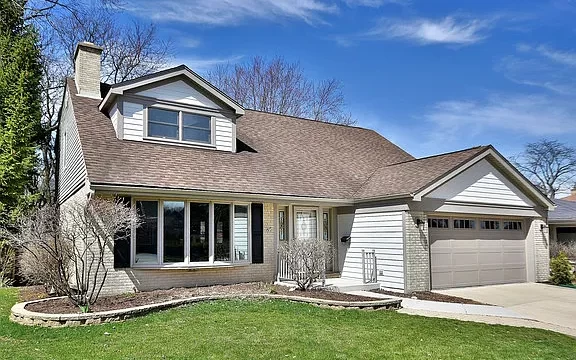House hacking multi-family homes is a savvy real estate investment strategy
that allows individuals to reduce or even eliminate their housing expenses
while building wealth through rental income. This strategy involves purchasing
a multi-family property, such as a duplex, triplex, or quadplex, and living in
one of the units while renting out the others. Here, we’ll explore the concept
of house hacking multi-family homes and its benefits in more detail.
What is House Hacking? House hacking is a real estate investment strategy
that blends homeownership with rental property ownership. Instead of buying
a single-family home to live in, house hackers purchase multi-family properties
and occupy one of the units. The rental income generated from the other units
helps offset or cover the mortgage, property taxes, insurance, and
maintenance costs.
Benefits of House Hacking Multi-Family Homes:
- Reduced Living Expenses: The primary advantage of house hacking is
the significant reduction in living expenses. Rent collected from tenants
helps cover or even completely offset the mortgage, allowing house
hackers to live virtually rent-free. - Build Equity: By making mortgage payments on the multi-family
property, you’re building equity in the real estate. Over time, this can
lead to substantial wealth accumulation. - Cash Flow: Depending on the property’s rental income and expenses,
house hackers may even generate positive cash flow each month,
providing an additional income stream. - Property Management Experience: House hacking gives individuals
the opportunity to learn the ins and outs of property management, a
valuable skill for aspiring real estate investors. - Tax Benefits: Rental property owners can take advantage of various tax
deductions, such as mortgage interest, property taxes, and maintenance
costs. Consult a tax professional for guidance on maximizing these
benefits. - Long-Term Investment: Real estate historically appreciates over time.
By owning a multi-family property, you are investing in an asset that can
increase in value, further contributing to your net worth. - Diversification: Multi-family properties provide diversification within
the real estate market. If one unit is vacant or experiencing issues, the
rental income from the other units can help offset the loss. - Scalability: House hacking can be a stepping stone to larger real estate
investments. After gaining experience and building equity, you can
move on to more substantial multi-family properties or other real estate
ventures.
Tips for Successful House Hacking: - Location Matters: Choose a location with strong rental demand and
potential for appreciation. Proximity to schools, employment centers,
and public transportation can be crucial. - Screen Tenants Carefully: Good tenants are vital for a successful house
hacking venture. Screen applicants thoroughly to avoid potential
problems. - Create Lease Agreements: Establish clear lease agreements that outline
rent amounts, due dates, and maintenance responsibilities to avoid
misunderstandings. - Emergency Fund: Maintain an emergency fund to cover unexpected
expenses, such as repairs or vacancies. - Property Management: Consider hiring a property management
company as your portfolio grows to help streamline operations.
What is Live and Flip?
Live and flip is a real estate investment strategy that involves
purchasing a property, living in it temporarily, and then renovating
and selling it for a profit. It’s essentially a blend of house hacking and
fix-and-flip investing. Here’s how it typically works:
- Purchase a Property: As a live and flip investor, your journey
begins by identifying a property that has the potential for
appreciation or significant improvements. This property will serve
as both your home and your investment. - Live in the Property: Unlike traditional fix-and-flip investors
who never occupy the property, live and flip investors live in the
house for a predetermined period, often a year or more. This
residency can provide certain financing advantages and tax
benefits. - Renovate and Improve: During your time living in the property,
you’ll work on renovations and improvements to increase its
market value. This can include both cosmetic upgrades and
essential repairs. - Sell for Profit: After the renovation is complete and the
property has appreciated in value, you list it for sale. The goal is
to sell it for a profit, which can be substantial if you’ve made
smart investment decisions and executed effective renovations.
Benefits of Live and Flip: - Reduced Living Costs: By living in the property while you
renovate it, you can significantly reduce your living expenses,
which is a major advantage over traditional fix-and-flip investing. - Tax Benefits: In many cases, living in the property can make you
eligible for certain tax advantages, such as the ability to exclude
a portion of your capital gains when you sell the property as your
primary residence. - Control Over Renovations: Living in the property gives you
greater control and oversight during the renovation process. You
can ensure that the improvements meet your standards and
preferences. - Increased Profit Potential: The longer you live in the property,
the more potential there is for it to appreciate in value. This can
lead to a larger profit when you eventually sell. - Diverse Investment Portfolio: Live and flip allows you to
diversify your real estate portfolio by including both rental
income properties (while you live there) and fix-and-flip
properties (once you sell).
Getting Started with Live and Flip: - Education and Research: Start by educating yourself about real
estate investing, market trends, and the specific area you’re
interested in. Research potential properties and their potential
for appreciation. - Financing: Secure financing for your property purchase.
Consider options like FHA loans, which require a lower down
payment and can be used for primary residences, or
conventional mortgages. - Property Selection: Choose a property that not only fits your
budget but also has the potential for value appreciation through
renovations. - Renovation Plan: Develop a detailed renovation plan and
budget. Consider hiring contractors or doing some of the work
yourself if you have the skills. - Living Arrangements: Move into the property and live there
while you renovate. Be prepared for some inconvenience during
the renovation process. - Marketing and Selling: Once the renovations are complete, list
the property for sale. Work with a real estate agent to market it
effectively.
In conclusion, house hacking multi-family homes is a powerful real estate
investment strategy that allows individuals to live more affordably while
building wealth through rental income and property appreciation. With careful
planning and execution, house hacking can be a smart way to enter the world
of real estate investing and achieve financial goals.
If you have more questions about financing a potential house hack
contact Dylan Kramer at 630-708-7088 or dylan.kramer@benchmark.us
If you have specific real estate questions, contact Larry Shakman at
630-921-0611 or larry@trustedagentusa.com





